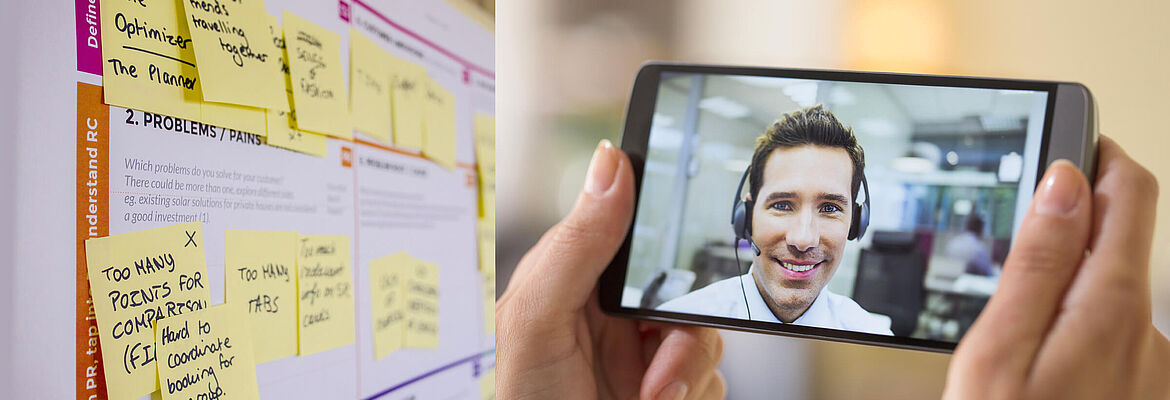"We need a kick-off for our change process, preferably something interactive but many participants will only be able to take part virtually but that's not so bad - they can just go offline for the interactive part. The main thing is that they get all the information."
That’s how one of our clients worded the assignment to us. "Hold on" we thought. That can’t be right. If those colleagues taking part virtually don’t participate in the workshop part we will miss their perspective and we won’t be able to reach them so well to get their buy-in for the change process. There must be another way.
But first of all, what is the exact situation?
In a large meeting room, 70 leaders from different areas of the company come together. Another 25 leaders log into a Skype conference. Within just a few weeks, these leaders, with mostly a wide variety of interests, will need to set up a restructuring program across different business areas and make savings of millions. Constructive collaboration is important and above all a shared understanding of what this "constructive collaboration " is. The kick-off begins with a clear statement from the board. The team is sworn in to the goals; the situation is again explained in detail and the importance of this measure is emphasised. The leaders in the room listen intently. Much will be discovered today for the first time. At the same time the camera is pointed at the board. The video of the speech is broadcast live to the Skype conference. In a split-screen, the online participants can see both the board and the presentation. At the end of the speech, there is time for questions. Some participants raise their hand in the room. The participants in the Skype conference write their questions in the chat. A facilitator collects them and then switches on the microphone for the virtual participant with the question.
The same applies to the presentation of the project manager. The participants in the room can experience the same quality of the event as the virtual participants. The success can be seen immediately: none of the virtual participants leaves the conference early.
Now they should go into working groups. In eight small groups, the participants discuss the nature of cooperation and develop concrete gos and no-gos for different headings. From here on, three facilitators from Movendo support the activity. While two Movendo consultants introduce the activity to the participants in the room and divide up the groups, another Movendo consultant takes over the virtual group. The same content is shown and the structure of the task is put on pin boards and provided as a virtual whiteboard. Eight groups work in parallel, seven in one room, one in their Skype conference.
Almost 100 people from all over the world discuss the framework of their cooperation, everyone is fully involved, everyone becomes part of the result.
At the end, a participant in the virtual group presents the result of their work, while the whiteboard from the Skype conference is shown on the screen in the room. Afterwards, the seven on-site groups show their bulletin boards and are filmed. The colleagues attending online can listen to everything live.
Our client is amazed: with simple means we have managed to involve all colleagues interactively and not to demote them to spectators. We are convinced that everything can be made possible in a virtual space. Just don’t give up too soon.











